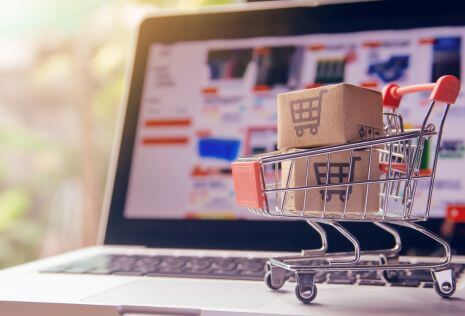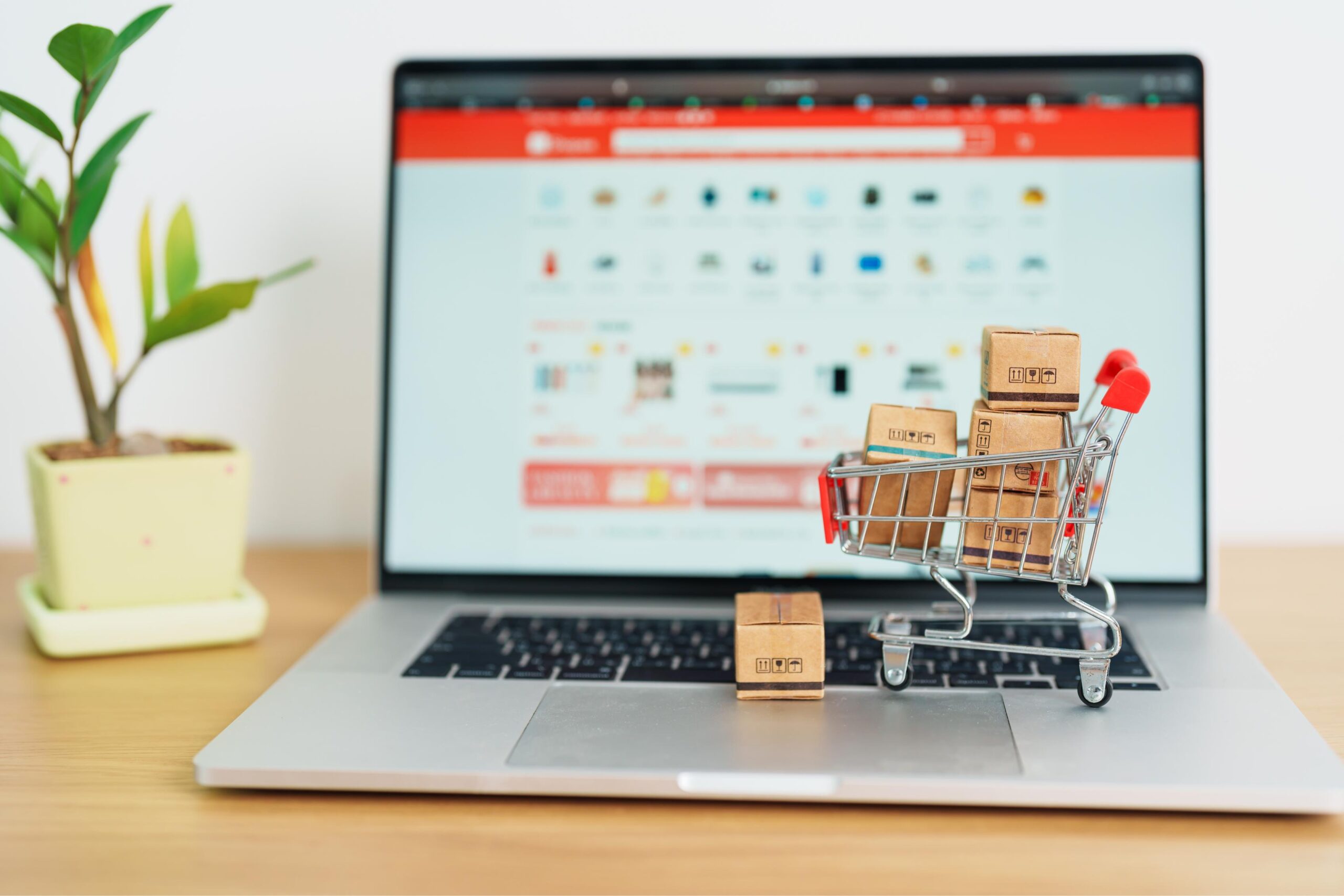Dropshipping with AliExpress: Beginning guide 2024

Dropshipping is a simple way to start an online business without holding inventory. By working with suppliers like AliExpress, you can sell products worldwide without the hassle of storage or shipping.
This guide covers everything you need to know to start dropshipping with AliExpress—step-by-step and stress-free. Dive in and discover how easy it is to launch your own business today!
Table of contents

What is AliExpress?
AliExpress is a global online marketplace owned by the Alibaba Group and based in China. It offers a vast range of affordable products, from electronics to fashion, connecting buyers with independent sellers worldwide.
Unlike traditional retail platforms, AliExpress allows sellers to reach customers directly, making it ideal for dropshipping. With a large inventory, low prices, and international shipping, it’s a popular choice for those wanting to start a store without major upfront costs.

How does AliExpress dropshipping work?
AliExpress dropshipping allows you to sell products without purchasing inventory upfront. When a customer places an order, you buy the product on AliExpress, and the supplier ships it directly to the customer.
This model minimizes risks and reduces startup costs, making it ideal for new entrepreneurs.
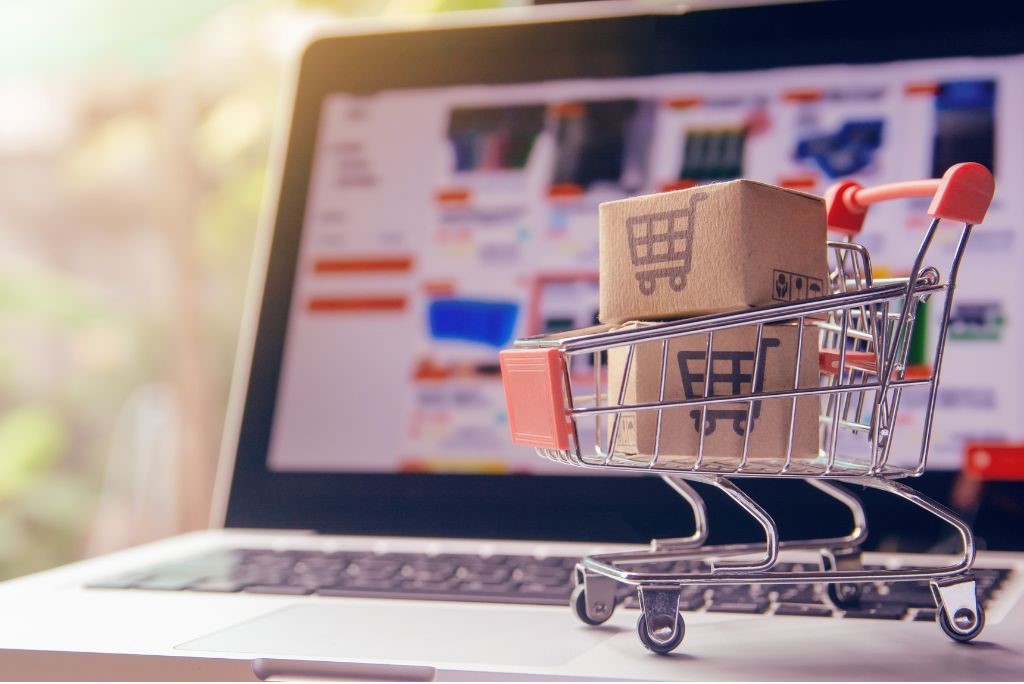
What are the benefits of AliExpress?
Dropshipping with AliExpress offers several advantages:
- Low startup costs: No need to invest in inventory upfront.
- Wide product selection: Thousands of products across various categories.
- Global shipping: AliExpress suppliers ship worldwide, expanding your reach.
- Automation compatibility: Platforms like Shopify and eBay integrate with AliExpress, making management easier.

Where can you sell AliExpress dropshipping products?
There are multiple platforms where you can run your dropshipping business:
- Amazon: Allows you to reach a huge audience but has stricter policies. Research thoroughly to meet their requirements.
- Shopify: Known for its dropshipping-friendly setup. Shopify apps make importing and automating orders from AliExpress easy.
- BigCommerce: Great for larger stores and offers more in-depth features for managing inventory and orders.

How to dropship with AliExpress: Step-by-Step guide
No matter which platform you select, establishing a successful e-commerce business follows a similar set of steps.

Phase 1 > Find a winning product
Choosing the right product is key to a successful dropshipping business. A “winning product” is one that has high demand, low competition, and appeals strongly to a specific audience. Identifying such products requires research and analysis. Here are some effective methods to help you discover potential winners:
Methods to find winning products
- Google Trends: Use Google Trends to track the popularity of specific products or niches over time. Look for consistent growth patterns rather than short-lived spikes.
- Reddit: Explore relevant subreddits to see what people are discussing or recommending. This can offer insight into trends or popular items within specific communities.
- AliExpress bestselling: Browse AliExpress’s bestseller categories to see what’s popular among consumers. These products often have proven demand, making them solid options for dropshipping.
- Amazon Trend Report: Amazon’s trending reports highlight products with increasing popularity. Checking these lists can give you an idea of what’s trending in various categories.
- Pinterest: Pinterest’s search trends reveal popular ideas and items in various niches. Keywords like “best gifts” or “trending products” often showcase items with high interest.
- Shopify Trending Products List: Shopify regularly updates its list of trending products, giving insight into items that are gaining traction across e-commerce stores.
- FaceBook Ads Library: The Facebook Ads Library allows you to see what products are currently being advertised on Facebook and Instagram. By searching for terms related to your niche, you can see which products are receiving ad spend and engagement, often indicating high potential for dropshipping success.

Phase 2 > Find the product and supplier on AliExpress
When you find products that pique your interest, it’s important to dig deeper on the AliExpress product page to ensure they’re right for your business. Here are a few steps to help you evaluate products:
- Review product images: Examining product photos gives insight into the item’s features and quality, helping you assess whether it will meet customer expectations.
- Check reviews and ratings: Take time to read both product and supplier reviews. This feedback is valuable for gauging the product’s quality and the supplier’s reliability. Customer reviews can reveal potential issues and highlight features that matter to buyers, helping you avoid negative customer experiences that could impact long-term sales.
- Confirm supplier exclusivity: Look for suppliers who don’t sell on Amazon, as this could create pricing conflicts. If a supplier lists the same item on Amazon, they may price it competitively, making it difficult for you to maintain a profitable margin.
- Test products yourself: While reviews are helpful, testing products firsthand ensures you’re satisfied with their quality. Since AliExpress shipping can take longer, plan ahead for testing to avoid delays in your product launch.
Once you’re confident in your chosen products, create an AliExpress account to start engaging with suppliers and setting up your store.

Review the supplier’s ratings and history
AliExpress displays a feedback rating next to each seller’s name, represented as a percentage. Aim to work with suppliers who have a satisfaction rating of at least 95% for a reliable partnership.
Both products and sellers on AliExpress have individual feedback ratings. By clicking on a seller’s name, you can view a detailed feedback breakdown and see how long they’ve been active on the platform. Prioritize experienced suppliers with strong shipping histories and a track record of positive reviews for the best results.
Negotiating with suppliers
Establishing clear communication with suppliers is essential before listing products. Negotiating not only helps secure better pricing but also ensures that you and the supplier align on expectations.
- Discuss pricing and shipping costs: Shipping can significantly impact your profit margins, so it’s worth discussing options. While faster shipping methods on AliExpress may cost more, some suppliers offer free shipping. Finding the best balance between cost and delivery time is crucial.
- Evaluate shipping times: Many suppliers offer ePacket shipping, which generally delivers within 14 days and is a preferred option for dropshippers. Shorter delivery times enhance customer satisfaction, reducing the chances of canceled orders.
- Clarify processing time: Choose suppliers with quick processing times (ideally one to two days) to minimize total delivery time. Faster processing keeps customers happy and improves the likelihood of repeat purchases.
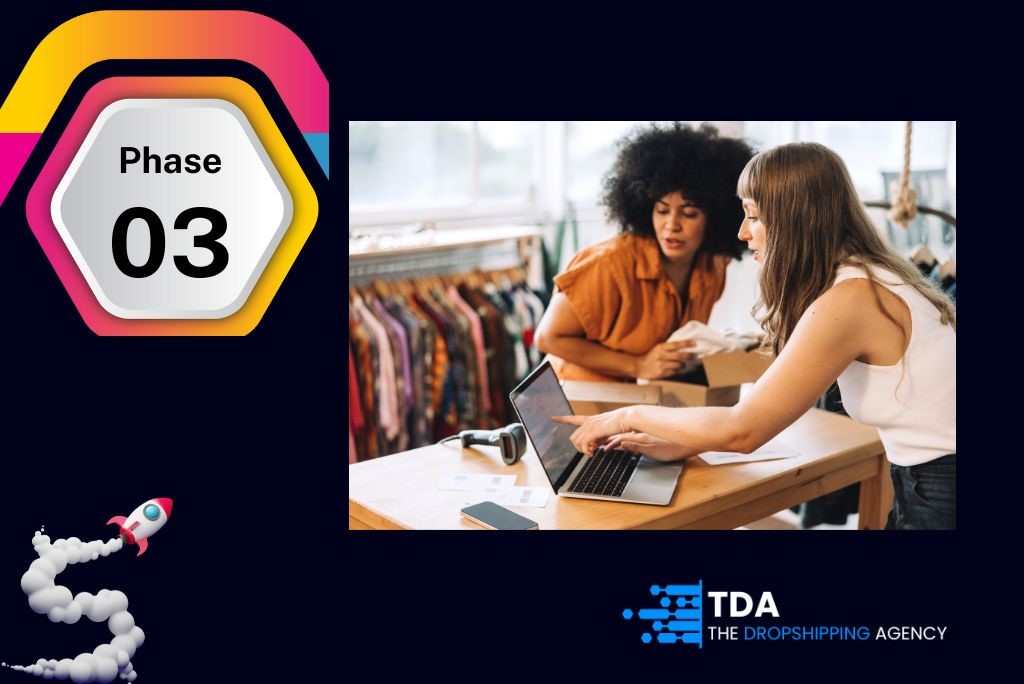
Phase 3 > Set up your store
Once you’ve defined your niche, it’s time to set up your online storefront. Platforms like Shopify, BigCommerce, and WooCommerce make this process user-friendly and provide a professional shopping experience for customers. You can select templates, customize your site’s design, and organize products according to your niche.
A professional-looking store builds trust with customers, so take time to create a visually appealing and easy-to-navigate layout that aligns with your brand.

Phase 4 > Launch your store and start marketing
Once your store is stocked with a variety of products and you’re satisfied with the website’s design, it’s time to hit “publish” and bring your store to life. To attract visitors and generate sales, consider a mix of paid and organic marketing strategies.
For paid marketing
- Pay-Per-Click (PPC) Ads: Platforms like Google AdWords help drive traffic by placing ads where your audience is actively searching.
- Social Media advertising: Paid ads on Facebook, Instagram, and other platforms reach specific target demographics.
- Affiliate marketing: Partnering with affiliates lets others promote your products, bringing in traffic in exchange for a commission.
- Influencer marketing: Collaborating with influencers who align with your niche can boost visibility and attract followers.
For organic marketing
- SEO optimization: Ensuring your website is optimized for search engines increases organic traffic over time.
- Content creation: Publish SEO-friendly articles and blog posts relevant to your products to drive interest and boost search rankings.
- Word of mouth: Happy customers are likely to share their experience, creating natural referrals.
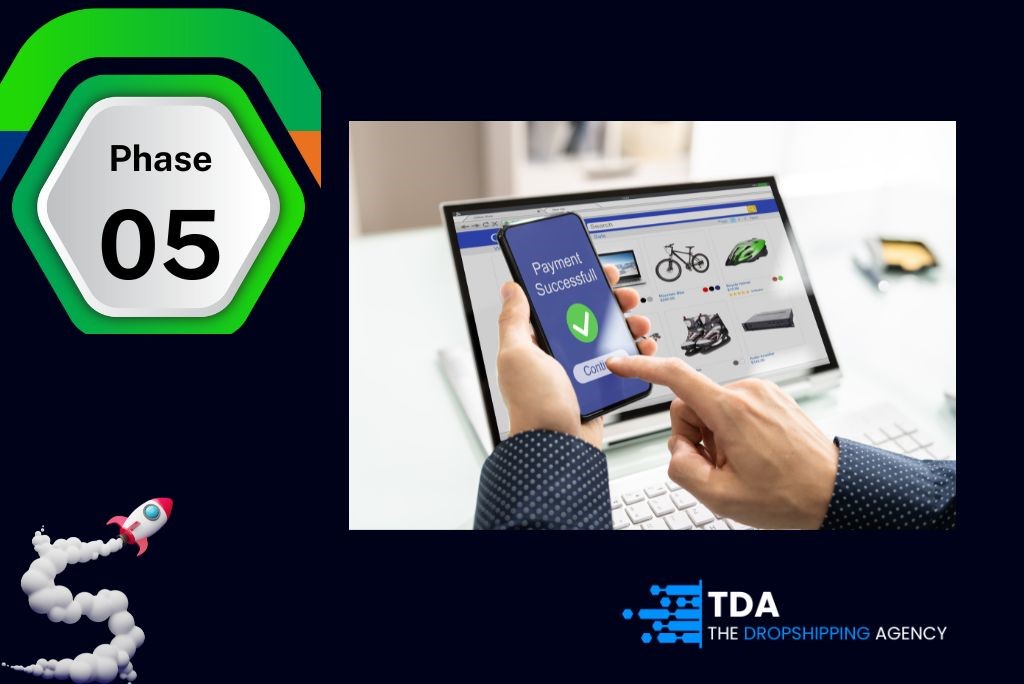
Phase 5 > Process customer orders through AliExpress
Dropshipping with AliExpress follows the same steps as standard dropshipping. When a customer places an order, you simply purchase the product on AliExpress and input the customer’s shipping details. From there, the supplier takes care of packing and shipping.
You have the option to place orders manually or streamline the process with automation tools.
Manual ordering:
When a customer places an order on your site, it’s essential to promptly process it through AliExpress. If you’re managing orders manually, here’s how it typically works:
- A customer purchases a product on your website.
- You then visit AliExpress to buy the product at a wholesale price.
- During checkout, input the customer’s shipping information so the AliExpress supplier can send the item directly to them.
If you plan to handle orders manually, consider keeping a spreadsheet that lists each product on your site, its selling price, the cost on AliExpress, and a direct link to the AliExpress listing.
This approach helps you quickly locate products when orders come in and makes it easy to monitor any price changes from suppliers.

Automated ordering:
For higher sales volumes, manual order processing can quickly become time-consuming. To streamline this, consider using a dropshipping app which integrates with Shopify.
With an app you only need to set up an account, add products, and ensure your payment method is active. When orders come in, they appear within the dashboard, allowing you to place AliExpress orders with just a few clicks. The app automatically transfers customer information to AliExpress, saving you time and reducing errors.

Phase 6 > Monitor site and sales performance
Monitoring your store’s performance is essential to understand what’s working and where improvements can be made. Most e-commerce platforms provide analytics tools to track site visits, sales, and other key metrics through a dashboard. For deeper insights, consider tools like SEMrush and Google Analytics.
Regularly analyze performance data, including sales trends, customer behavior, and popular products. Adjust your AliExpress product selection based on seasonal demand and trending items to capitalize on changes in consumer interest.

Most asked questions (FAQ's)
Does AliExpress alow dropshipping?
Yes, AliExpress fully supports dropshipping and provides access to a vast selection of products, making it popular among dropshippers.
How much does it cost to dropship on AliExpress?
AliExpress itself is free to use, but there are other costs to consider. You’ll need to budget for platform fees, like subscriptions to Shopify, BigCommerce, or eBay. Marketing expenses, such as paid ads and social media promotions, also add up.
Additionally, transaction fees, including payment gateway charges or platform commissions, should be factored in. Fortunately, AliExpress allows flexible budgeting, so you can adjust costs as your business grows.
Does AliExpress give refunds?
Yes, AliExpress offers refunds through its Buyer Protection program if items don’t arrive or differ significantly from the description.
Why is AliExpress so cheap?
AliExpress products are often inexpensive because they come directly from manufacturers in China, reducing middleman costs and allowing for lower prices.

